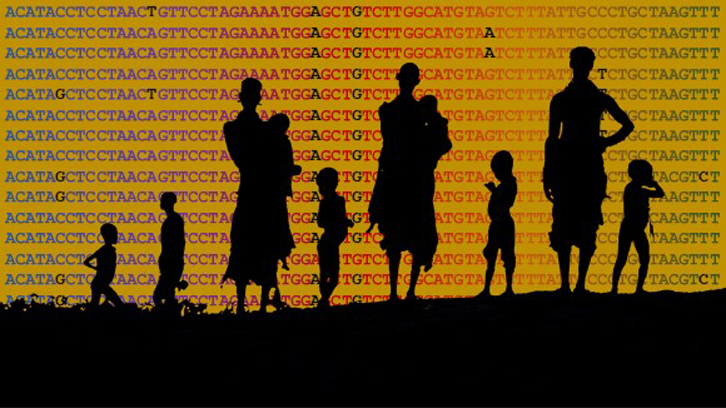Over 800 new genome regions possibly relevant to human evolution identified

The large amount of genomic data fostered by the genomic revolution has drastically changed the evolutionary vision of the human past, challenging interpretations and solving disputes upheld for years by archaeologists, historians, anthropologists and linguists. By colonizing almost all corners of the planet, our species has found itself subject to continuous adaptation challenges. These selective pressures left signatures in the affected regions of the genome that can be inferred by analyzing the genetic variation.
In 2018, the research group Bioinformatics of Genome Diversity at the Universitat Autònoma de Barcelona (UAB), in collaboration with scientists from the Institute of Evolutionary Biology (IBE), published PopHuman, the greatest inventory of genetic diversity measures computed throughout the human genome using the data from the 1000 Genome Project. By using PopHuman, the UAB researchers scanned a set of eight measures, which detect different selection footprints and cover distinct time scales along the genome. The detection of these regions in our species allows us to assess the general genomic impact as well as to determine the specific genomic variants responsible for the different human adaptations.
The study includes information from 22 human populations and a total of 2859 candidate regions under selection. A total of 1986 of these regions had already been detected. The new study by the UAB researchers therefore contributes with 40% more genomic signals relevant to human adaptation, some of which are related to the hybridization of our species with the Neanderthals and other hominid species. Among the results obtained are well-known examples of local adaptations, such as the recurrent adaptations produced in the region containing the LCT gene, which encodes the enzyme responsible for the degradation of lactose. Another classical example of local adaptation can be found in the region containing the EGLN1 gene, related to the route of the hypoxia inducible factor (HIF), which is related to the ability to live in high-altitudes, such as those living in Tibet.
The results have been compiled in the new PopHumanScan catalogue, which is open and freely accessible at https://pophumanscan.uab.cat. The catalogue was designed as a collective database that, for the first time, includes numerous structural and functional annotations on the regions, as well as the recurrence of selection signals in the different populations analyzed. We foresee that future studies of these newly-detected genomic signals will help us to explain new examples of human adaptation, as well as to improve our knowledge on how the introgression of archaic genomes has modelled our current genomes.
Image: Diagram of the flux used to detect and characterize structurally and functionally the candidate regions under selection in the human genome.
Institute of Biotechnology and Biomedicine
Universitat Autònoma de Barcelona
References
Jesús Murga-Moreno, Marta Coronado-Zamora, Alejandra Bodelón, Antonio Barbadilla, Sònia Casillas. (2019). PopHumanScan: the online catalog of human genome adaptation. Nucleic Acids Research, Volume 47, Issue D1, Pages D1080-D1089. DOI: https://doi.org/10.1093/nar/gky959. Impact factor: 11,561.
Review of the PopHuman navigator published in UABDivulga: https://www.uab.cat/web/news-detail-1345680342044.html?noticiaid=1345745031404.

